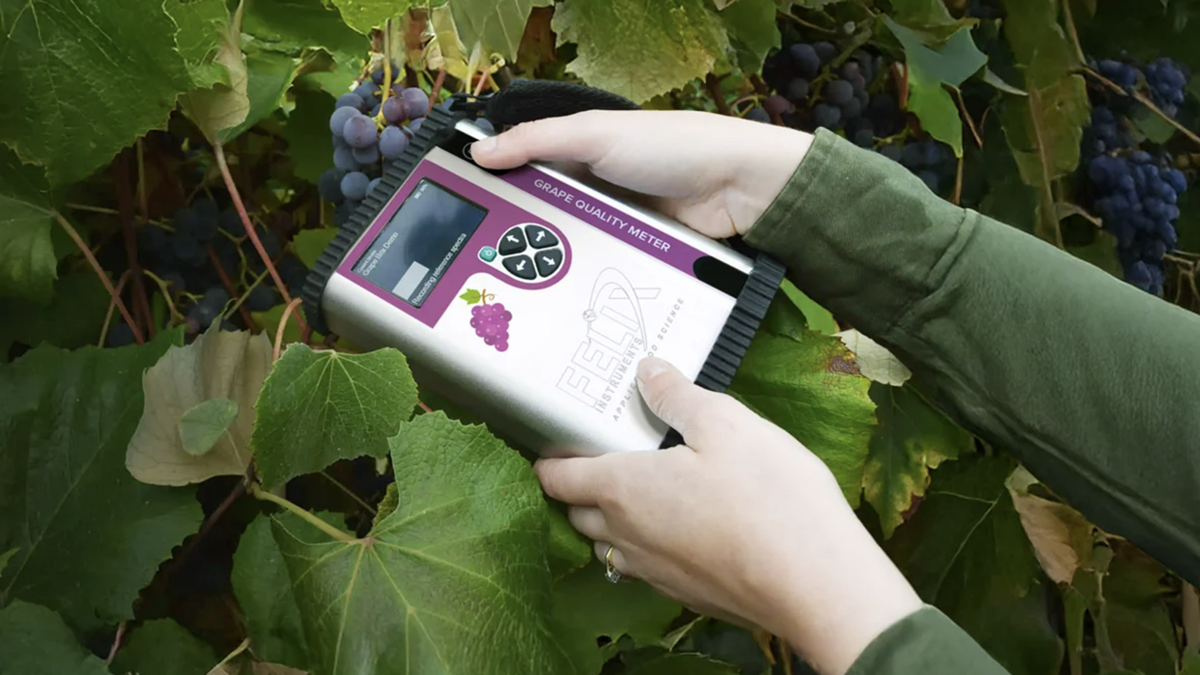Measurements
Melon fruit: physiology & quality
After flower set and pollination, the fruit initially develops to grow in size. In the last stage, ripening changes the fruit composition, appearance, and texture to make it edible. Ripening makes fruits softer, sweeter, and changes their color. Melons are unusual in that they show a wide range of ripening strategies. Some varieties such as cantalupensis, are climacteric, wherein ethylene is involved in the ripening process. Others, like those in the inodorous group, are non-climacteric, meaning no additional ripening will occur post-harvest. Ethylene, the phytohormone, triggers ripening in climacteric fruits and is accompanied by a rise in respiration rate. Climacteric fruits accumulate starch. During ripening, starch is converted to sugar, accompanied by the synthesis of organic acids and volatiles that provide flavor. During this time, the cell wall degrades, softening the mesocarp to change the texture of fruits. At the same time, chlorophyll degrades, and flavonoids and carotenoids accumulate, changing skin and flesh color. Unlike other climacteric fruits, in melon, the accumulation of pigments, sugar, and flesh softening is independent of ethylene. Therefore, the species is interesting for scientists who consider this could be an alternative ripening pathway in climacteric fruits, where ethylene-dependent and ethylene-independent pathways exist. In non-climacteric melons, the ripening process occurs with the help of different hormones, but not ethylene. Climacteric melons develop more aromatic compounds and orange flesh, but their shelf life is lower due to ethylene-induced softening. Non-climacteric melons, on the other hand, have greenish flesh, less aromatic content, and longer shelf-life. There is a competition for assimilates as fruits develop. The fruits are larger, sweeter, firmer, and have heavier seeds in plants with a reduced fruit load. Melons can last ten days without cooling in tropical conditions, but cut fruits deteriorate faster. Cut fruits can stay good for four days when stored in a controlled atmosphere.
18 October, 2022
After flower set and pollination, the fruit initially develops to grow in size. In the last stage, ripening changes the fruit composition, appearance, and texture to make it edible. Ripening makes fruits softer, sweeter, and changes their color. Melons are unusual in that they show a wide range of ripening strategies. Some varieties such as cantalupensis, are climacteric, wherein ethylene is involved in the ripening process. Others, like those in the inodorous group, are non-climacteric, meaning no additional ripening will occur post-harvest. Ethylene, the phytohormone, triggers ripening in climacteric fruits and is accompanied by a rise in respiration rate. Climacteric fruits accumulate starch. During ripening, starch is converted to sugar, accompanied by the synthesis of organic acids and volatiles that provide flavor. During this time, the cell wall degrades, softening the mesocarp to change the texture of fruits. At the same time, chlorophyll degrades, and flavonoids and carotenoids accumulate, changing skin and flesh color. Unlike other climacteric fruits, in melon, the accumulation of pigments, sugar, and flesh softening is independent of ethylene. Therefore, the species is interesting for scientists who consider this could be an alternative ripening pathway in climacteric fruits, where ethylene-dependent and ethylene-independent pathways exist. In non-climacteric melons, the ripening process occurs with the help of different hormones, but not ethylene. Climacteric melons develop more aromatic compounds and orange flesh, but their shelf life is lower due to ethylene-induced softening. Non-climacteric melons, on the other hand, have greenish flesh, less aromatic content, and longer shelf-life. There is a competition for assimilates as fruits develop. The fruits are larger, sweeter, firmer, and have heavier seeds in plants with a reduced fruit load. Melons can last ten days without cooling in tropical conditions, but cut fruits deteriorate faster. Cut fruits can stay good for four days when stored in a controlled atmosphere. Judging melon ripenessHistorically, ripeness judgement of the climacteric cantalupensis group was made by assessing the development of a musky odor. Ripeness in non-climacteric honeydew, on the other hand was traditionally identified in the field by a shift toward yellow in color profile. Unfortunately, trying to judge internal quality traits based on external changes can be subjective, inconsistent, and tedious. Given the complex ripening processes and the differences in ripe melon appearance in the different varieties, there is a need for convenient, objective measurement of internal quality based on biochemistry to monitor quality and ripeness. New methodsA 2010 study compared non-destructive techniques for internal quality assessment of melons. The methods evaluated were acoustic technology, NIR spectroscopy, dynamic technology, X-ray and computed tomography, and electrical and magnetic technology. The analysis provided by vis-NIR spectroscopy was judged to be optimal, especially for on-line estimation of internal quality. Advancements in NIRS technology in the 12 years since this study make it an even greater asset to stakeholders throughout the supply chain. Key melon quality traitsThe most common quality parameters studied in melons are sugars, pH, titratable acidity, internal defect, and maturity. Sugars or soluble solids content (SSC) is the parameter that is applied most widely in quality assessment and expressed as ºBrix. Varieties are differentiated based on their ºBrix. The lowest acceptable ºBrix in melons is 9%. Prior to the advent of NIR tools, ºBrix was measured by destructive refractometers. Titratable acidity measures the organic acid content of the fruits- citric, ascorbic, malic, and succinic acid levels. Titratable acids were earlier measured in the laboratory. As fruits ripen, the acidity decreases, but some acidity is required to ensure the fruits meet consumer taste preferences. Sugars and acidity, in tandem, are necessary to produce the flavor consumers like most. Volatiles that give melon flavor were earlier quantified by gas chromatography. Defects like water-soaking that occur in cantaloupe can also be detected by NIR-spectroscopy. Water soaking is a physiological disorder occurring in the final stages of fruit development and is not connected to ethylene. The cell walls are altered, and more water is moved into these parts of the fruits. The cause of water-soaking is not definite. It could be due to calcium deficiency or competition for resources in plants with many fruits. Traditionally, it was possible to detect only by cutting the fruit open. The new F-751 Melon Quality Meter by FELIX INSTRUMENTS is a tool that can conveniently and accurately estimate ºBrix without any destruction of fruit. Due to ºBrixs common use as a ripeness and maturity metric, it can help growers fix harvest dates and make optimal, data-driven decisions. Growers can upload information on fruit quality and use Felix Instruments FruitMaps application to get a spatial view of the maturity of their crops. The tool has advanced chemometrics and models to analyze several varieties of melon, including the popular Cantaloupe and Honeydew. Monitoring ripeness is also helpful for suppliers, packers of cut fruits, and distributors to keep track of melons health, discard spoilt melons and segregate fruits based on their stage of ripeness. Retailers can evaluate the quality of incoming fruits quickly based on NIR spectroscopy. Monitoring quality with NIR spectroscopy at various stages of the supply chain helps stakeholders supply melons with a high-quality flavor profile. Reducing the risk of rejection due to bad quality can also reduce food loss and increase ROI.



.jpg)







